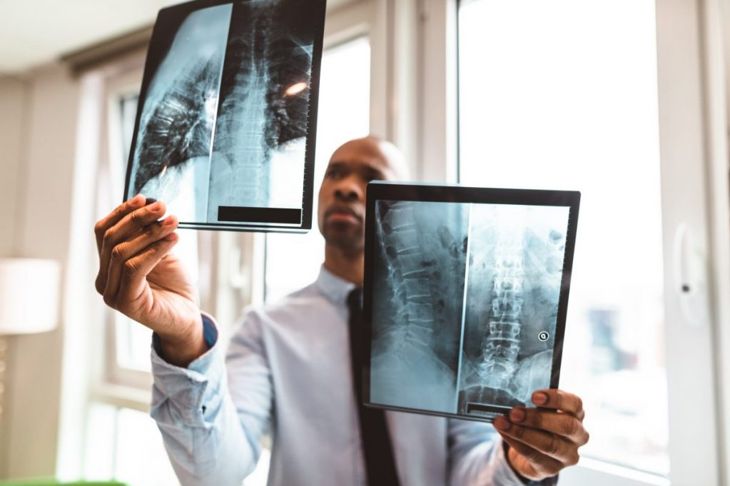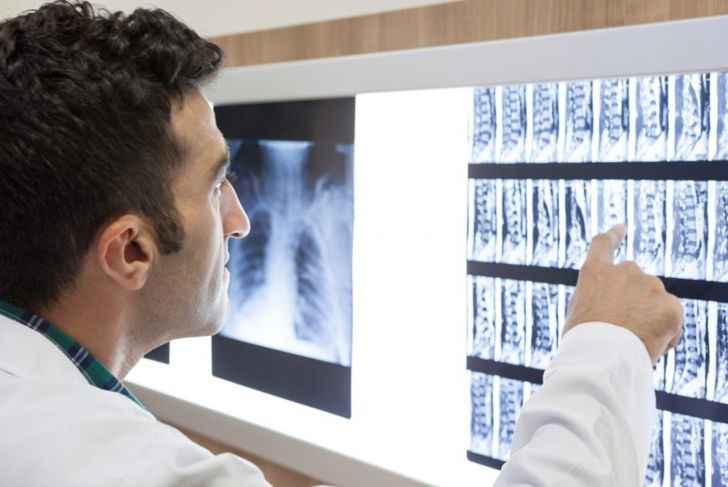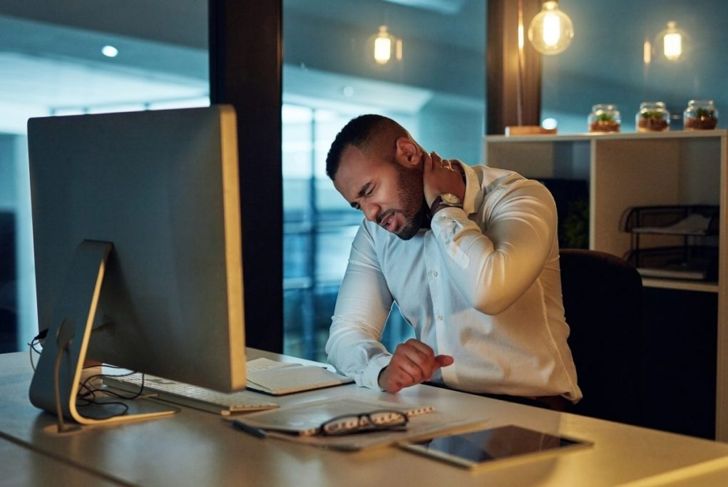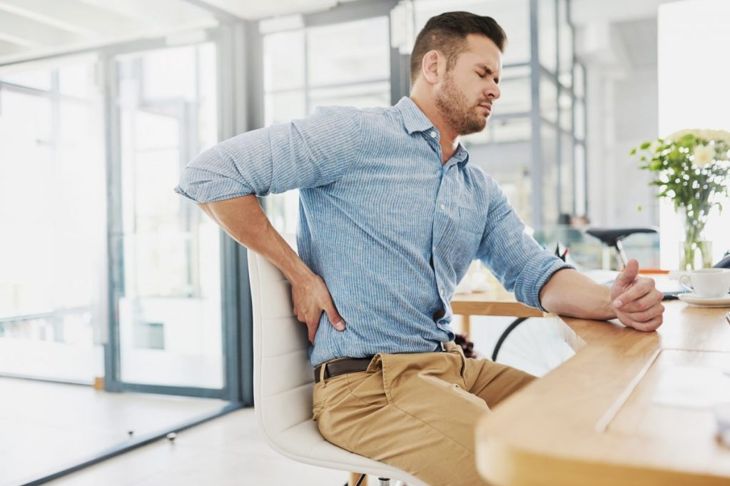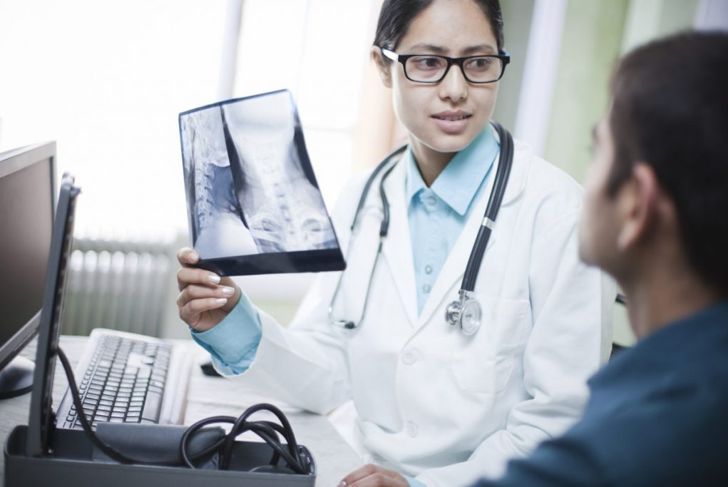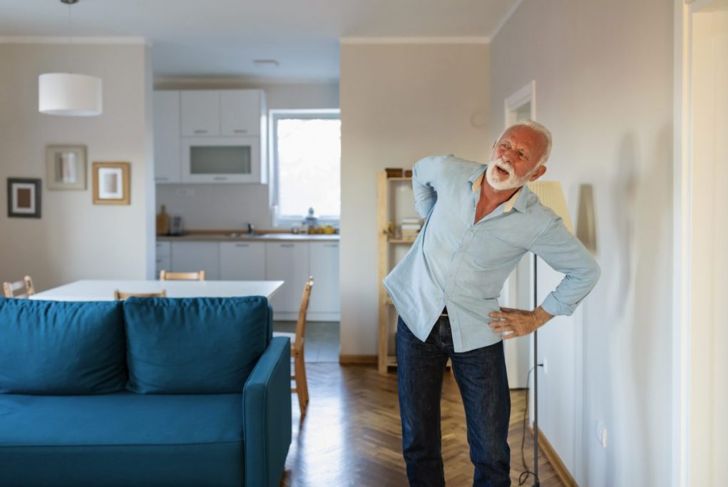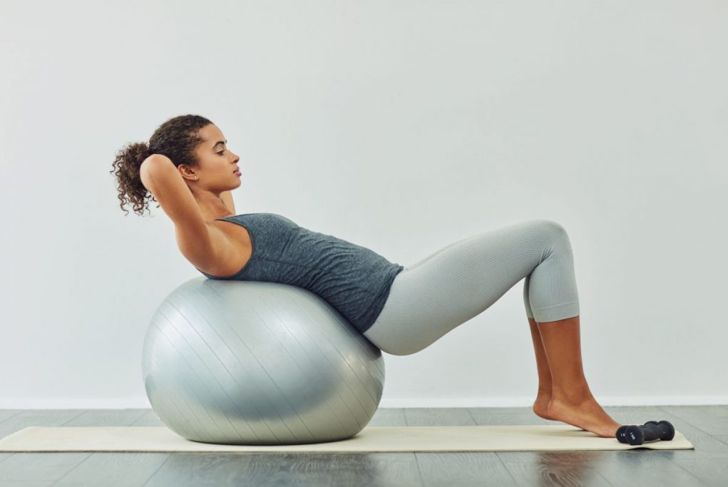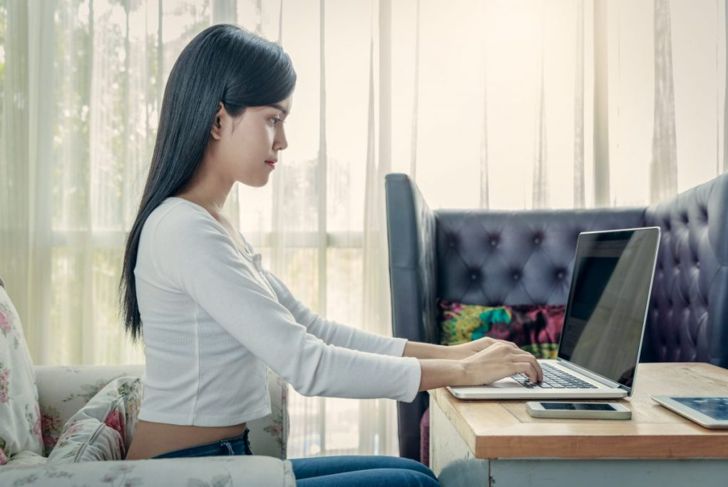Retrolisthesis is a joint dysfunction that occurs when a single vertebra slips backward. In some cases, the vertebra slips underneath a disc. This movement measures two millimeters or more but is not severe enough to qualify as a dislocation. Retrolisthesis most often happens in the neck and shoulder area or the lower back. Experts recognize several types of retrolisthesis and many possible treatments.
Types
There are three types of retrolisthesis:
- Partial retrolisthesis occurs when one vertebra slides backward from either the vertebra above or below it.
- Complete retrolisthesis describes a vertebra slipping backward from the vertebrae above and below it.
- Staircase retrolisthesis occurs when a vertebra moves backward from the vertebra above it but ahead of the vertebra below it.
Additionally, doctors define the location where the retrolisthesis occurred using one of three terms: cervical refers to the neck and shoulders, lumbar to the lower back, and thoracic to the middle of the spine.
Grading
Physicians use various grading methods to describe the severity of each retrolisthesis slip. Because the vertebrae move backward, they cannot use the grading methods from other spine conditions, such as spondylolisthesis. Instead, doctors use direct millimeter measurements to describe the amount of slippage. Alternatively, they will grade the slippage from 1 to 4, depending on the percentage of backward movement of the foramen, the passages in the spine.
Symptoms
Symptoms vary widely in people with retrolisthesis, due to ranges in severity. Pain originating from the affected area is common. Accounts of the pain differ greatly, described as dull in some instances, and sharp in others. Intensity and frequency also vary. Some people have palpable retrolisthesis, meaning a doctor can feel it through the skin. Many individuals experience a loss of range of motion. If the slip pinches a nerve or affects surrounding structures, it can cause neurological symptoms such as numbness, weakness, or tingling sensations.
Causes of Retrolisthesis
Specifically, retrolisthesis occurs when the space between vertebrae decreases, allowing for backward movement. In some cases, this is due to vertebrae shrinkage. Experts are still not entirely certain what makes the space between vertebrae decrease, though there are some theories. Some scientists believe that spinal injuries, degenerative spinal conditions, osteoporosis, and arthritis play some role in causing retrolisthesis. It’s also possible that weak abdominal and back muscles or poor nutrition are contributing factors. Some people develop retrolisthesis following back injuries.
Diagnosis
If a doctor suspects retrolisthesis, they have several options for confirming a diagnosis. One of the best tools is a lateral x-ray, which requires the patient stand while technicians perform the scan. This type is necessary because retrolisthesis is almost impossible to see while a person is lying down. The doctors will measure the degree of slippage using the scans, which may also reveal issues such as bone spurs, shorter disc heights, or hardened arteries around the vertebrae.
Complications
Without treatment, retrolisthesis can lead to dangerous complications. The most serious of these is spondylotic myelopathy or spinal cord compression. This is particularly common in people over the age of 50. As the spine compresses nerves, numbness or tingling may develop in the arms, hands, and fingers. Individuals may also experience weakness that makes it difficult to grasp or hold onto objects. Spondylotic myelopathy can also affect balance, coordination, and fine motor skills.
Treatment
People with retrolisthesis have many treatment options available to them. Unlike other spine issues, doctors do not usually recommend surgery for retrolisthesis, unless other treatment options fail. Nonsurgical methods include exercises and physical therapy to help build muscle tone. Some people find microcurrent therapy effective. A doctor will administer directed, low-level electric currents to reduce inflammation and pain.
Ideal Nutrition
Because some doctors believe nutritional issues can contribute to retrolisthesis, they may suggest dietary changes. Eating nutritious and vitamin-rich foods can improve bone health. Spinach and carrots provide essential vitamin A, milk and bread deliver vitamin D, and nuts and pork are rich in zinc. Nutritional supplements may also be helpful. Specialist-guided dieting can benefit heavier individuals, as reducing weight can alleviate pressure, and therefore pain, in the back.
Physical Therapy
Exercise routines and physical therapy can increase muscle tone to help hold the vertebrae in place, improve mobility, and reduce pain for those already managing retrolisthesis. Beneficial exercises include crunches on an exercise ball or planks to improve core strength. Low-impact options such as pilates or yoga are also effective.
Prevention
Because doctors are not entirely sure of its causes, it is unclear whether retrolisthesis is preventable. However, available evidence suggests some people could reduce their risk of developing retrolisthesis. Maintaining good posture can help prevent many spine conditions. Learning to lift heavy objects properly and avoiding extreme weight can prevent back strains. Smoking can lead to joint damage; individuals at risk for spinal conditions, especially, should try to stop or reduce their habit.

 Home
Home Health
Health Diet & Nutrition
Diet & Nutrition Living Well
Living Well More
More